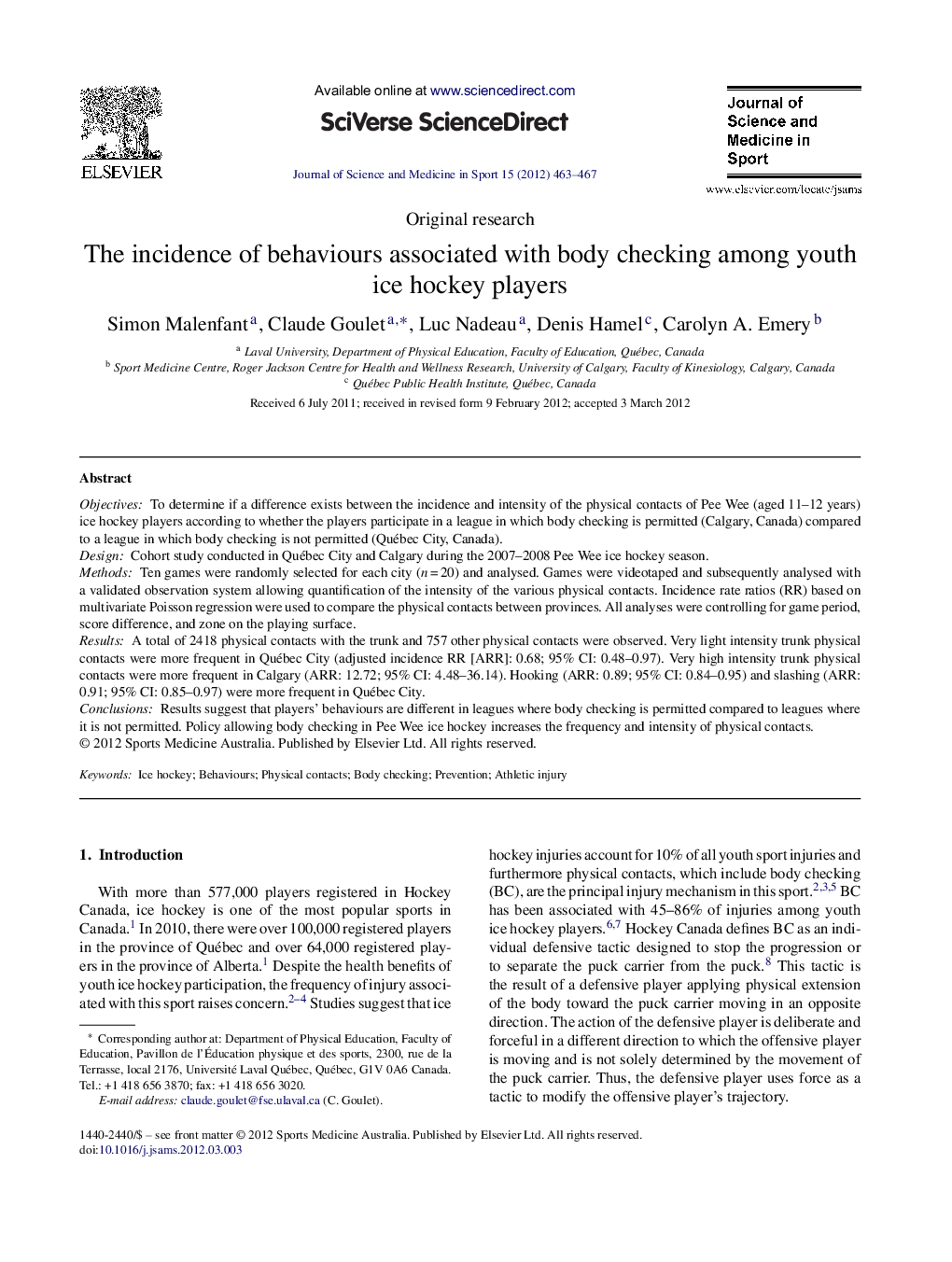| Article ID | Journal | Published Year | Pages | File Type |
|---|---|---|---|---|
| 2703000 | Journal of Science and Medicine in Sport | 2012 | 5 Pages |
ObjectivesTo determine if a difference exists between the incidence and intensity of the physical contacts of Pee Wee (aged 11–12 years) ice hockey players according to whether the players participate in a league in which body checking is permitted (Calgary, Canada) compared to a league in which body checking is not permitted (Québec City, Canada).DesignCohort study conducted in Québec City and Calgary during the 2007–2008 Pee Wee ice hockey season.MethodsTen games were randomly selected for each city (n = 20) and analysed. Games were videotaped and subsequently analysed with a validated observation system allowing quantification of the intensity of the various physical contacts. Incidence rate ratios (RR) based on multivariate Poisson regression were used to compare the physical contacts between provinces. All analyses were controlling for game period, score difference, and zone on the playing surface.ResultsA total of 2418 physical contacts with the trunk and 757 other physical contacts were observed. Very light intensity trunk physical contacts were more frequent in Québec City (adjusted incidence RR [ARR]: 0.68; 95% CI: 0.48–0.97). Very high intensity trunk physical contacts were more frequent in Calgary (ARR: 12.72; 95% CI: 4.48–36.14). Hooking (ARR: 0.89; 95% CI: 0.84–0.95) and slashing (ARR: 0.91; 95% CI: 0.85–0.97) were more frequent in Québec City.ConclusionsResults suggest that players’ behaviours are different in leagues where body checking is permitted compared to leagues where it is not permitted. Policy allowing body checking in Pee Wee ice hockey increases the frequency and intensity of physical contacts.
